There is a separate page on the 2WD Delta.
It was some years later, in 1986, when the HF 4WD finally emerged as a production car. Now with a significantly redesigned
4WD system
featuring a
torsen rear differential
and a centre diff with a viscous coupling, it also gained a significant power increase through the installation of a 2-litre injected and
turbocharged engine (165bhp) adapted from that in the Thema. It was also easily recognisable from the outside, mainly thanks to the four round headlights
replacing the two large rectangular units in the rest of the range, but also thanks to sideskirts and bonnet vents. Internally it gained new trim, colours and a
revised dashboard.
1986 also saw the rather sudden and unpredicted demise of Group B as the highest level in rallying, leaving manufacturers looking for production models
suitable for the new Group A regulations. For Lancia the choice was obvious, and this was to significantly change the history of the Delta. However, the new regulations
Whilst production of the road car continued apace, in order to meet the 5,000 production requirement for homologation, development of the rally car
raced ahead. Changes involved the suspension, brakes, transmission, strengthening the car and reducing the weight. The power from the engine was also
increased, up from the production 165bhp to 260bhp. The HF4WD dominated the 1987 season, taking the WRC title for both drivers and constructors in both Group A and
Group N, as well as winning the European Rally Championship. But the car was seriously limited in future development terms by various factors (wheel arch space,
frontal air intake area and weight being the three most significant), and the decision was taken to introduce a road version (again requiring a minimum
production run of 5,000) to address these.
The competition car for 1988 thus overcame several of the 1987 cars deficiencies, but further changes in the regulations produced further limits. The
arches allowed bigger wheels and tyres, as well as more suspension travel, whilst the air intakes allowed the new engine to run cooler. Power started the
year around the 260bhp level (due to the new restrictions) but was up to about 280bhp as the season progressed. A six speed ZF gearbox was also homologated for
use in 1988.
The Geneva Motorshow of 1989 saw the public introduction of the 16v car, the Delta HF integrale 16v, with a press launch shortly afterwards in May.
Visually differentiated only by the bulging bonnet (and the badging) it had a declared 200bhp in standard road trim. As well as the new 16v cylinder head, the
engine had a range of improvements, from new connrods, improved valves and seats, new inlet and exhaust manifolds, to a new Garrett T3 turbo with overboost and
an electronically controlled wastegate. Other novelties included ABS, modified
The four-valve-per-cylinder rally car had a declared 295bhp
(under the nominal limit of 300bhp set by the FIA), larger brakes, a stronger propshaft and revised radiators, ignition and boost control. The 16v rally car
also launched a new paint scheme,
using a red base colour with jazzy Martini stripes, designed by Giugiaro. It did not last long ! The car debuted
on the San Remo Rally in October (as soon as the 5,000th had been built !), which it won, also in the process winning the Championship title again. The same car also won the
constructors championship in 1990. 1991 saw the car continuing, with an electronically controlled centre differential appearing on some events. Water-cooled front
brakes and dampers were also seen. The championship was again won by the all -dominating integrale.
Around the same time, production of the road cars, which had always been at the Chivasso plant, changed hands. Part of the factory (which was otherwise pretty
much redundant) was sold to Maggiora who continued to produce the cars, with painting done by Bertone. Maggiora also continued development of the car, and
in 1993 introduced a final version, generally known as the Evo 2, although no change in official nomination was made, still being the Delta HF integrale.
During the years of production, many limited editions were made, and various markets attached various badges to various versions. Often these used colours to
distinguish them. In 1992 a series of yellow cars, the 'Gialla' were produced, in 1994 green was the theme with the 'Verde York' (or 'World Rally Champions')
special series. The 'Blue Lagos' also emerged in 1994, whilst much smaller numbers were built of the 'Club Italia' (all dark blue) in 1992, the 'Dealers Collection' (all red)
in 1994, the 'Bianca Perlata' (all pearl white) as well as the 'HiFi', 'Lancia Club' and 'Final Edition', the latter all being for the Japanese market.
Celebrating the rally successes of the car were the 'Martini 5' series at the end of 1991 and the 'Martini 6' a year later.
Various one-offs were produced, including a cabriolet for the Agnelli family and the 'HIT'
concept car. A limited run of about 25 of the Hyena, a composite bodied Evo 2 designed by
Zagato, were built in Holland.
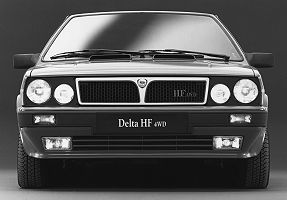 The first four-wheel-drive Delta was shown to the press at Fiats test track in 1981, with an initial public showing at the Turin Motorshow of the
following year. This was an early development car, with a carburettor-fed, turbocharged 1600 twin-cam unit, a powerplant released for sale in the 2WD HF turbo in 1983.
The first four-wheel-drive Delta was shown to the press at Fiats test track in 1981, with an initial public showing at the Turin Motorshow of the
following year. This was an early development car, with a carburettor-fed, turbocharged 1600 twin-cam unit, a powerplant released for sale in the 2WD HF turbo in 1983.
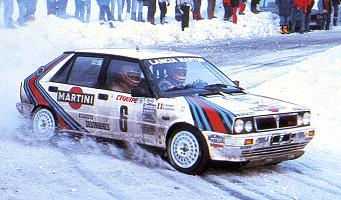 were only announced in May 1986, to take effect from January 1 1987, leaving little time for development.
were only announced in May 1986, to take effect from January 1 1987, leaving little time for development.
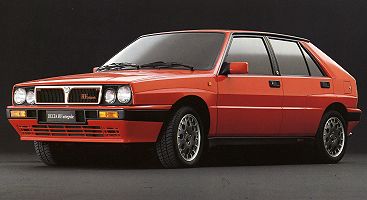 The Frankfurt Motorshow of 1987 saw the public presentation of the result, the Delta HF integrale. Visually it was immediately recognisable by the flared
wheelarches fitted to each corner, addressing the first concern as well as the new front bumper, designed also to complement the arches, which featured
significantly more air intake area. The engine saw a new Garrett T3 turbocharger coupled with a larger intercooler and numerous modifications to the internals.
The result was 185bhp, neccessitating improvements to the clutch and brakes whilst some changes were also made to the suspension to improve its robustness.
The Frankfurt Motorshow of 1987 saw the public presentation of the result, the Delta HF integrale. Visually it was immediately recognisable by the flared
wheelarches fitted to each corner, addressing the first concern as well as the new front bumper, designed also to complement the arches, which featured
significantly more air intake area. The engine saw a new Garrett T3 turbocharger coupled with a larger intercooler and numerous modifications to the internals.
The result was 185bhp, neccessitating improvements to the clutch and brakes whilst some changes were also made to the suspension to improve its robustness.
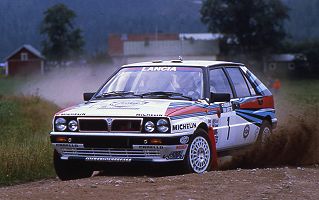 The HF integrale only debuted in competition in Portugal (winning, of course), with the HF 4WD being used in the earlier events. This was due to the
lack of enough production integrales to meet the 5,000 homologation requirement. The season went well, with Lancia winning 10 of the 11 rounds. Power was supposedly
up to 290bhp on some events, the torque split had been tweaked up to 50:50 for some surfaces (previously up to 60:40 front:rear) and Lancia had
announced it was developing both a two-pedal system with no clutch, and a four-wheel-steering system. A 16v engine was rumoured to be imminent.
The HF integrale only debuted in competition in Portugal (winning, of course), with the HF 4WD being used in the earlier events. This was due to the
lack of enough production integrales to meet the 5,000 homologation requirement. The season went well, with Lancia winning 10 of the 11 rounds. Power was supposedly
up to 290bhp on some events, the torque split had been tweaked up to 50:50 for some surfaces (previously up to 60:40 front:rear) and Lancia had
announced it was developing both a two-pedal system with no clutch, and a four-wheel-steering system. A 16v engine was rumoured to be imminent.
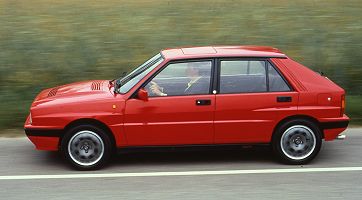 suspension, a new torque split of 47 front, 53 rear (previously the road cars had been 56 front, 44 rear) and new tyres. For certain markets (such as Switzerland)
the new car was fitted with a low-emission 8v engine, producing 177bhp, all other improvements being made.
suspension, a new torque split of 47 front, 53 rear (previously the road cars had been 56 front, 44 rear) and new tyres. For certain markets (such as Switzerland)
the new car was fitted with a low-emission 8v engine, producing 177bhp, all other improvements being made.
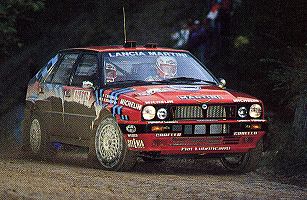 The road car had seen little change since its launch back in 1989, but late 1991 saw the next version, officially the Delta HF integrale, shown to the world.
Unofficially it was commonly referred to as the 'evoluzione' or just Evo. Later (with hindsight) it became known as the Evo 1.
Numerous significant changes were made to almost all parts of the car. Visually, even bigger arches covered each of the wheels, whilst a larger bulge in the bonnet
was flanked by two additional vents. New light clusters and sideskirts were less obvious than the addition of a tailgate spoiler, whilst closer inspection
would reveal a move to five-stud wheels instead of the previous four. Various other detail changes
were made to the outside and cockpit. Mechanically the car had an increased track both at the front and the rear, the front suspension was revised, including a
new anti-roll bar and new arms, the brakes (new four pot callipers at the front, new discs all round and a new servo unit), exhaust and wheels were all improved (generally larger !) and a new power steering system, incorporating an oil-cooler,
was adopted. The engine had a declared 210bhp, thanks to the exhaust changes and some management improvements.
The road car had seen little change since its launch back in 1989, but late 1991 saw the next version, officially the Delta HF integrale, shown to the world.
Unofficially it was commonly referred to as the 'evoluzione' or just Evo. Later (with hindsight) it became known as the Evo 1.
Numerous significant changes were made to almost all parts of the car. Visually, even bigger arches covered each of the wheels, whilst a larger bulge in the bonnet
was flanked by two additional vents. New light clusters and sideskirts were less obvious than the addition of a tailgate spoiler, whilst closer inspection
would reveal a move to five-stud wheels instead of the previous four. Various other detail changes
were made to the outside and cockpit. Mechanically the car had an increased track both at the front and the rear, the front suspension was revised, including a
new anti-roll bar and new arms, the brakes (new four pot callipers at the front, new discs all round and a new servo unit), exhaust and wheels were all improved (generally larger !) and a new power steering system, incorporating an oil-cooler,
was adopted. The engine had a declared 210bhp, thanks to the exhaust changes and some management improvements.
](integrale_evo2.jpg) At the end of 1991 Lancia officially withdrew from rallying. The new cars and all spares were officially handed to Martini, who contracted Jolly Club to run the cars
in the 1992 season. The factory continued limited support and development. Despite these changes, again, the new integrale won on its debut, the Monte Carlo rally, and went on
to win the championship, but in October Lancia officially withdrew from motorsport entirely, donating all integrale related equipment to the Jolly Club team. Martini left
with the factory, and in 1993 the Jolly Club attempted to run a full championship. Luck evaded them and the competition overtook the now ageing cars, lacking
development and backing. The integrale continued to be campaigned on many a regional event for several years before the homologation expired in 2000.
At the end of 1991 Lancia officially withdrew from rallying. The new cars and all spares were officially handed to Martini, who contracted Jolly Club to run the cars
in the 1992 season. The factory continued limited support and development. Despite these changes, again, the new integrale won on its debut, the Monte Carlo rally, and went on
to win the championship, but in October Lancia officially withdrew from motorsport entirely, donating all integrale related equipment to the Jolly Club team. Martini left
with the factory, and in 1993 the Jolly Club attempted to run a full championship. Luck evaded them and the competition overtook the now ageing cars, lacking
development and backing. The integrale continued to be campaigned on many a regional event for several years before the homologation expired in 2000.
![Lancia Delta HF integrale 16v [Evo] Group A](integrale_evo_rally.jpg) The most significant modification was the addition of a three-way cataytic converter, combined with a new water-cooled turbo, revised engine management and
injection systems and a red camshaft cover. Aircon became standard, the seats changed, 16 inch wheels were fitted, and a new steering wheel was used. Production finally ceased at
the end of 1994.
The most significant modification was the addition of a three-way cataytic converter, combined with a new water-cooled turbo, revised engine management and
injection systems and a red camshaft cover. Aircon became standard, the seats changed, 16 inch wheels were fitted, and a new steering wheel was used. Production finally ceased at
the end of 1994.
Technical Details
| Driveline | transverse engine at front with permanent four wheel drive
Free front differential (HF 4WD unit) Centre differential incorporating viscous coupling Rear torsen differential (HF 4WD unit) |
| Engines |
HF 4WD : 1995cc (84x90mm) dohc 8v turbocharged & intercooled 4 cyl with 165bhp @ 5,250rpm
HF integrale (1987) :1995cc (84x90mm) dohc 8v turbocharged & intercooled 4 cyl with 185bhp @ 5,300rpm HF integrale 16v (1989) : 1995cc (84x90mm) dohc 16v turbocharged & intercooled 4 cyl with 200bhp @ 5,500rpm HF integrale [Evo] (1991) : 1995cc (84x90mm) dohc 16v turbocharged & intercooled 4 cyl with 210bhp @ 5,750rpm HF integrale [Evo 2] (1993) : 1995cc (84x90mm) dohc 16v turbocharged & intercooled 4 cyl with 215bhp @ 5,750rpm |
| Suspension |
front : MacPherson strut with telescopic dampers and coil springs plus anti-roll bar
rear : MacPherson with telescopic dampers and coil springs, located by twin transverse and single trailing links See the HF 4WD suspension. See the integrale [Evo] front and rear suspension. wheelbase : 2480mm track (front/rear) : HF 4WD : 1409mm/1404mm 8v integrale : 1426mm/1406mm 16v integrale : 1448mm/1440mm 16v integrale [Evo] : 1502mm/1500mm 16v integrale [Evo 2] : 1516mm/1504mm |
| Brakes | front : ventilated discs (HF 4WD 257mm)(integrale 284mm)(Evo 281mm)
rear : discs (HF 4WD, 8v, 16v 227mm)(Evo 251mm) handbrake operating the rear callipers via cable dual hydraulic circuit with servo assistance ABS on some models |
| Transmission | 5 speed manual gearbox
HF 4WD & 8v torque split : front 56%, rear 44% integrale 16v & Evo : front 47%, rear 53% |
| Steering | Rack and pinion with servo assistance |
| Kerb weight |
HF 4WD : 1190kg (60.5% front, 39.5% rear)
integrale 8v : 1200kg (63% front, 37% rear) integrale 16v : 1250kg (62.4% front, 37.6% rear) [Evo] : 1300kg (62.4% front, 37.6% rear) [Evo 2] : 1340kg (63.3% front, 36.7% rear) |
| Dimensions |
HF 4WD.
HF integrale. HF integrale 16v. HF integrale [Evo 1]. HF integral [Evo 2]. |
HF 4WD cutaway drawings :
road car,
Group A rally car
integrale cutaway drawings :
8v road car,
16v Group A rally car
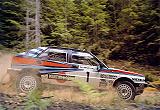 |
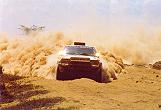 |
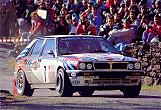 |
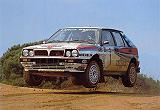 |
Performance
| model | max speed | 0-100km/h | standing km |
| HF4WD (1986) | 208 km/h | 7.8 sec | 28.5 sec |
| HF integrale (1987) | 215 km/h | 6.6 sec | 27.1 sec |
| HF integrale 16v (1989) | 220 km/h | 5.7 sec | 26.1 sec |
| HF integrale [Evo] (1991) | 220 km/h | 5.7 sec | 26.1 sec |
| HF integrale [Evo 2] (1993) | 220 km/h | 5.7 sec | 26.1 sec |
Buying / Selling
Firstly, given the performance (and hard life some of these cars have had) it is essential to check for accident damage. Check that
there are no mismatching panels, large areas of discolouration or signs
of fresh paint. Look closely for signs of cracking or distortion where the pillars meet the roof, around the sunroof and around the tops of the door
openings. There should be a colour code sticker on the underside of the bonnet and some
original stickers on the front cross-panel.
Check for corrosion around the sunroof (caused by blocked drain channels), the inner wings on older cars and around the hinges of the hatch.
If possible check where the front anti-roll bar mounts are fixed to the floor, these can fail.
On the Evo 1 and 2 cars, the front anti-roll bar drop links are a weakpoint, and can cause a tapping noise under the floor of the car as you drive it.
Similarly, the suspension bushes (which will again cause a clunking on driving) also have a short lifespan. Also check the front flexible brake pipes for damage
or cracking, the exhaust (especially the back box) for corrosion.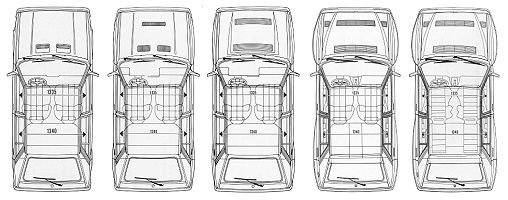 All the normal things to check before buying (or things to do before selling) an integrale apply (see our
Delta page for suggestions), but given the vehicle there are some specifics also needing careful checking.
All the normal things to check before buying (or things to do before selling) an integrale apply (see our
Delta page for suggestions), but given the vehicle there are some specifics also needing careful checking.
Lancia Delta integrale Books :
buy
them online here (in association with Amazon)
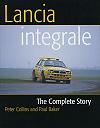 Lancia Delta Integrale
Lancia Delta Integrale
|
Peter Collins, 2003 |
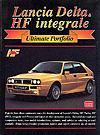 Lancia
Delta & Integrale ultimate portfolio
Lancia
Delta & Integrale ultimate portfolio |
2001 |
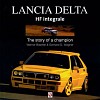 Lancia Delta HF Integrale
Lancia Delta HF Integrale
|
W Blaettel & G Wagner, 2007 |
For more books Lancia's, see our Online Bookstore
integrale comment form
![]() There is also a list of all our picture galleries (including museums, motorshows and various events).
There is also a list of all our picture galleries (including museums, motorshows and various events).
Wallpapers/Desktop Backgrounds of numerous Lancia's, including the integrale, are available to download.
See also our Lancia advertisements gallery, where several period magazine adverts can be seen.
![Lancia Delta HF integrale [Evo 1]](integrale_evo1.jpg)
Use the buttons at the top to navigate further, or
Copyright © 2000 to 2008 CarsfromItaly